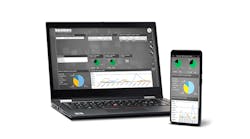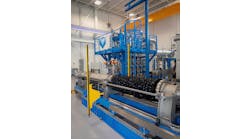This article was printed in CONTROL's August 2009 edition.
If you ever encountered any fieldbus early adopters, I'll bet you didn't hear a lot of cheers or pom-pom flailing about instrument calibrations. It's not that calibration was an afterthought—fieldbus specifications have always supported methods that allowed adjustments of devices to match an applied standard. But methods had to run on a fieldbus-capable platform, which in earlier years, was usually limited to the host DCS.
A user wishing to calibrate a valve, for example, could initiate an automatic or manual calibration from the host system. He or she would probably need an assistant in the field to verify the valve was moving through its range of travel as expected, or could wing it and simply verify/stroke the valve at the conclusion of the calibration procedure, which also required a radio-carrying assistant in the field. A similar effort became necessary for transmitters.
One of the first products to address this disparity was the HART 375 communicator by Rosemount. The 375 allowed users to interact with the device one-on-one, provided it was commissioned on a live segment either in the physical plant or in the shop/lab. But, they still needed a separate device for applying a known/certified standard, and connections to the DCS database or asset management database were tenuous at best. Like their HART ancestors, Foundation fieldbus devices allowed changes without their being registered in the host. And the early versions of the 375 made you step down through the device's cryptic block parameter hierarchy—discouraging for technicians.
[pullquote]A few years ago, Beamex introduced a new fieldbus module that allowed its MC5 calibrators to connect to Profibus PA or Foundation fieldbus segments, and interact with any active device. The MC5 addresses the need for a certifiable standard, as their pressure and temperature modules have the accuracy needed to properly calibrate a 0.07% or better transmitter. And their fieldbus solution interacts with their calibration database in the same way as it does for conventional and HART-smart devices.
Recently, Emerson Process Management has introduced its latest handheld, the 475. Its enhanced Electronic Device Description Language- (EDDL) empowered color display is capable of configuring HART 7 wireless devices as well as Foundation fieldbus and legacy HART devices—all in the same package. The beauty of EDDL is that the displays for various devices and tasks will closely parallel those of any EDDL-capable host display.
A few creative end users have been exploring the use of 802.11 wireless to display their DCS interface on a wireless laptop or notebook PC. With proper security and firewalling, the same display one sees on the host's asset management or maintenance interface can be seen on a portable PC. The "ultra-mobile" Panasonic Toughbook U1 UMPC is available in an intrinsically safe version suitable for use in classified areas without a hot work permit. This portable host method is best for ensuring the DCS database is properly reconciled with the field device configuration because users employ the host tools exactly they would in the control house.
What about the physical interface to the device? I have a few suggestions. The FasTest kit of specialized connectors allow a clean, quick and high-pressure capable hookup with only a hand-tight connection. You can get a box of connectors for common male and female tube fittings for a modest price.
The PowerXpress is a surprisingly compact little package for powering and interconnecting all your favorite HART test devices, using the power provided by your PC or laptop USB port. It's not certified for hazardous areas yet, but many shop and/or lab tests can be performed more quickly. Jacks and test points are provided for multimeter, modem, HART communicator, and the HART device itself.
Many new products are appearing to help users work with their microprocessor-empowered digitally integrated devices. Please share your trials and successes with us!





